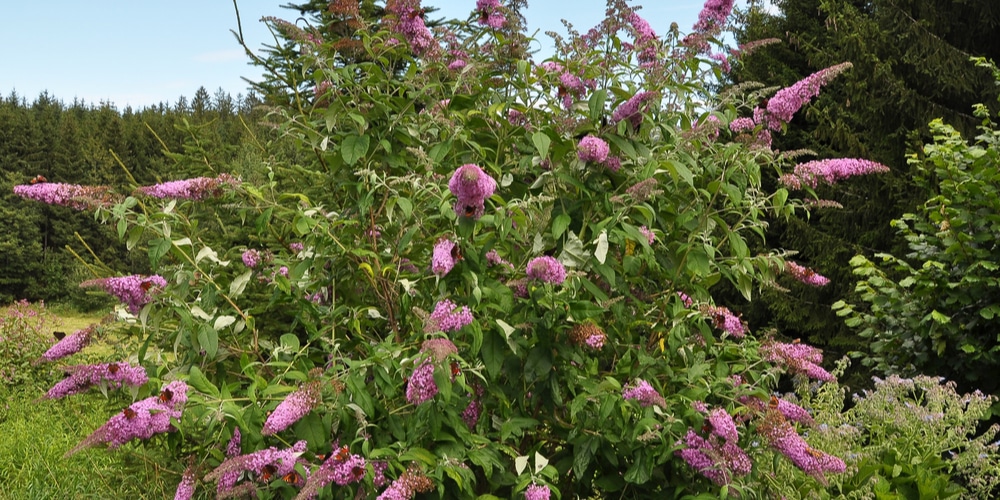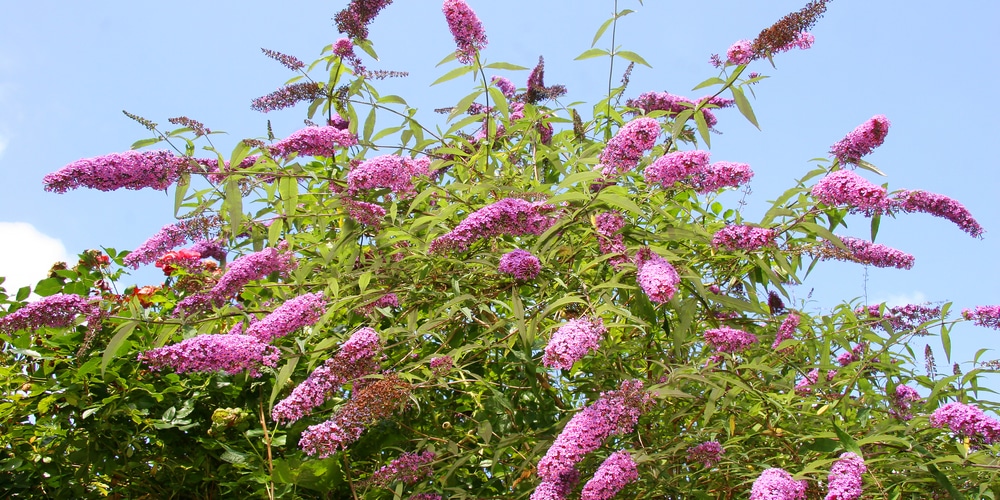Bees are some of the busiest creatures on Earth. They pollinate plants, make honey, and play an important role in our ecosystem. Unfortunately, the bees are starting to die. This isn’t a new problem, but it’s one that we need to start paying more attention to. As gardeners, we can do our part to help the bees by planting bee-friendly flowers. Do Bees Like Butterfly Bushes?
One of the most popular bee-friendly flowers is the butterfly bush. Does this mean that bees love butterfly bush? Let’s take a closer look.
What is a Butterfly Bush?
The Butterfly Bush, also known as Buddleja Davidii, is a beautiful and fragrant plant that is native to China. Although it is unrelated to true butterflies, the nectar-rich flowers are a favorite food source for many species of butterflies and other pollinators, bees included.
It’s easy to care for and tolerant of poor soil conditions. However, it does best in full sun and well-drained soil. With its profusion of flowers and attractive foliage, there’s no denying that the butterfly bush makes a great addition to any garden.
During the summer, the butterfly bush attracts hordes of butterflies. In fact, it’s not uncommon to see dozens of them flitting about the plants. The bushes can grow quite large, sometimes reaching heights of 12 feet or more, so it’s best to give them plenty of room to spread out.
But Do Bees Like Butterfly Bush?
The short answer is yes. Bees love butterfly bush! Not only does the plant provide nectar for the bees, but the flowers are also durable and long-lasting, which means that the bees can access the nectar for a more extended period.
In addition, the dense growth of the butterfly bush provides good cover and nesting sites for the bees.
Aside from bees, the butterfly bush is also a favorite of hummingbirds, wasps, and other pollinators. So if you’re looking for a plant that will attract bees and other beneficial insects to your garden, the butterfly bush is an excellent choice.
Take note, however, that it is important to have a variety of plants in your garden if you want to attract bees. Just because a plant is bee-friendly doesn’t mean that the bees will automatically flock to it.
Be sure to include a variety of flowers, herbs, and vegetables in your garden to provide the bees with a diverse diet. There has been a study that found out bees are more likely to visit gardens that have a variety of blooms than those that have a single type of flower.
Some flowering plants you can plant along with your butterfly bush to attract pollinators may include but are not limited to:
- Asters
- Sunflowers
- Black-Eyed Susans
- Lavender
- Parsley
- Thyme
The Effect of Bees on Butterfly Bushes
Bees and butterfly bushes go together like bread and butter. The tiny pollinators are essential in the life of a butterfly bush, helping to transfer pollen from flower to flower so that the plants can produce berries.
Pollinators are an essential part of the garden ecosystem, so it’s crucial to provide them with a variety of flowering plants that they can feed on. Without bees, these beautiful shrubs may not be able to reproduce and would eventually disappear from our landscapes.
On the other hand, butterfly bushes are a boon to bees, providing them with a steady source of nectar throughout the summer. The dense growth of the bush also provides bees and other pollinators a shady refuge from the hot sun.
Butterfly Bush: Tips for Growing Vibrant Blooms
Is there anything more cheerful than a butterfly bush in full bloom? These fast-growing shrubs are beloved for their clusters of vibrant blooms, which attract butterflies, bees, and other pollinators. While butterfly bushes are relatively easy to care for, there are a few tips that will help you achieve the best possible results.
1) Plant your butterfly bush in a sunny location.
Butterfly bushes need at least six hours of direct sun each day to produce an abundance of flowers. Butterfly bushes thrive in sunny conditions and will produce the most flowers when planted in a sunny spot. If you live in a climate where the summers are hot, some afternoon shade will protect the plant from overheating. You may also want to consider planting your butterfly bush in a container so you can move it to the sunniest spot in your garden as needed and move them in partial shade when temperatures get too high.
2) Water your butterfly bush regularly.
To reap the full benefits of a butterfly bush, water your plant regularly. Though it is drought-tolerant, the bush will produce more blooms if it receives regular irrigation. Water your plant deeply, providing one to two inches of water per week. You can also water your butterfly bush with a garden hose or sprinkler system.
3) Fertilize your butterfly bush twice a year.
Butterfly bushes need a moderate amount of fertilizer to grow and bloom well. A balanced, all-purpose fertilizer can be applied twice a year in the spring and fall. Be sure to follow the instructions on the package, and avoid overfertilizing as this can damage the plant.
When choosing a fertilizer for your butterfly bush, look for one that is high in phosphorus. Phosphorus helps promote blooming and will help your butterfly bush produce an abundance of flowers.
4) Prune your butterfly bush regularly.
Butterfly bushes need regular pruning to maintain their shape and keep them healthy. Some varieties are more invasive than others and may need to be pruned more often. Prune your butterfly bush in the spring after it has finished blooming, using clean shears or clippers. Cut back any dead or overgrown branches, and shape the plant to your liking.
Do Bees Like Butterfly Bushes?: Final Thoughts
As the sun rises and as the bees crawl out of their hives and set off in search of flowers, we can be grateful for the beauty and bounty of the butterfly bush. These lovely shrubs provide a habitat for bees, butterflies, and other pollinators and a feast of nectar for humans.
Bees play an essential role in pollinating many commercial crops such as almonds, apples, and avocados.
With this in mind, if you’re looking to do your part in supporting the local bee population, planting bee-friendly flowers is a great place to start, and the butterfly bush is an excellent addition to any garden.
Friendly to pollinators and are easy to grow, the butterfly bush is a must-have for any gardener looking to support their local bee population.
Related Article: Does Weed and Feed Kill Bees?


